10 Wonderful Day Trips from Plymouth
Known as ‘Britain’s Ocean City’, Plymouth is one of a kind. It’s a wonderful mix of seaside nature and urban life, and there are plenty of things to do here. However, if you’ve got an extra day in the city, there are also lots of day trips from Plymouth where you can enjoy its surrounding stunning natural beauty.
Plymouth sits in west Devon but is very close to the Cornish border. These counties are two of the most epic places in the UK, with breathtaking beaches, striking moorland, and quaint villages. After you’ve spent a couple of days in Plymouth, it’s well worth checking out some of these attractions in Devon and Cornwall!
The Best Day Trips from Plymouth
Various Spots in South East Cornwall
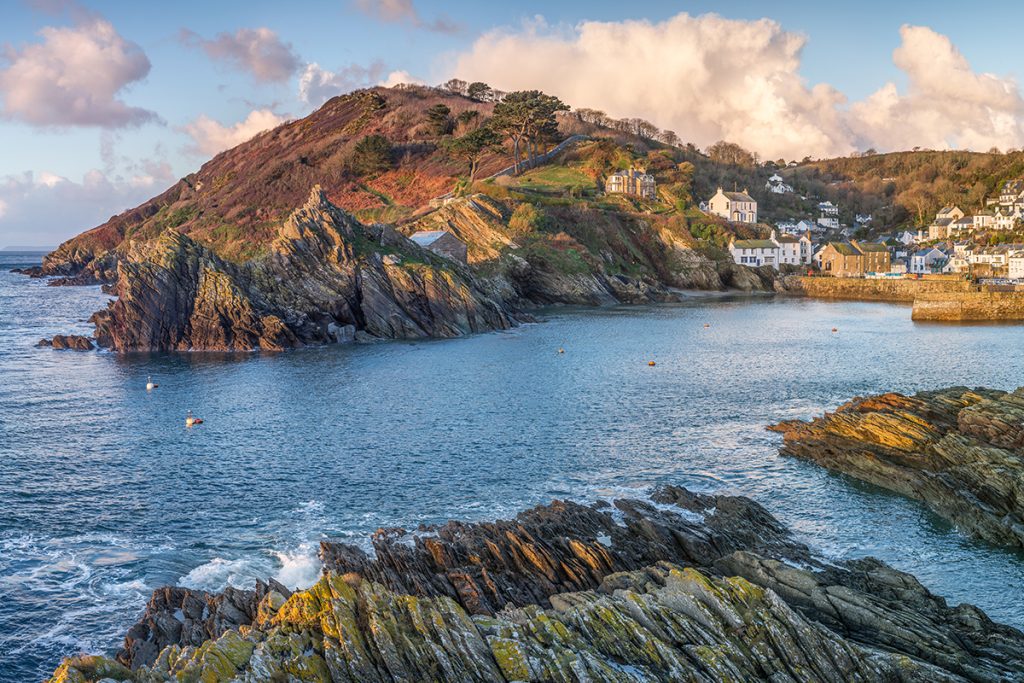
If you have a car, you can drive from Plymouth to spots on the south Cornish coastline, which is definitely one of the best day trip ideas from Plymouth. It’s easy to drive over the Tamar from Plymouth, and then you can spend a day trip visiting the following spots:
- Looe Island – the ferry from Looe runs to Looe Island several times a day, and you’ll have 2 hours to explore the island before the return journey. Looe Island has some beautiful wildlife and is well worth exploring.
- Polperro – this is an epic beach town with some of the best coastline in the country.
- Fowey – There are lots of things to do in Fowey, such as the River Fowey, more beaches, and some historical attractions, including St Catherine’s Castle.
- The Eden Project – this is an enterprise with the intention to connect people to the outside world. In the Eden Project, there are two large biomes with tropical and Mediterranean plants and climates. It’s a unique opportunity to walk through the jungle in Cornwall!
- Knightor Winery – located in St Austell, near to the Eden Project, Knightor Winery sells some of the best Cornish wine. You can do a guided tour around here at certain times, or do a tasting and buy a bottle direct from the winery. Click here to read more.
- The Lost Gardens of Heligan – these are 19th century botanical gardens, with lots of beautiful and fascinating plants and flowers. Click here for more information.

You probably won’t fit all of these attractions in a day, but you could check out the first three beachy areas, or the Eden Project, the Knightor Winery and the Lost Gardens of Heligan. To get more of an idea on how it all ties together see this road trip Cornwall itinerary. The Lost Gardens of Heligan is the furthest point on this list, and it’s about 1 hour 15 minutes from Plymouth.
Hiking in Dartmoor National Park
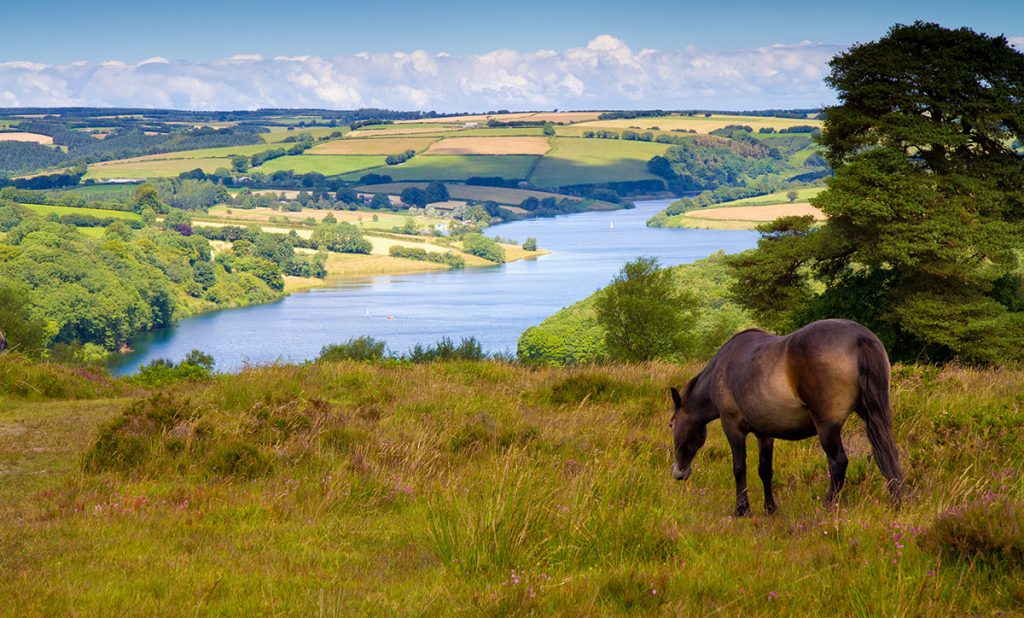
The edge of Dartmoor is just 6 miles from the city, making it one of the essential Plymouth day trips. Dartmoor encompasses 954 km2 of moorland, with lots of hikes, enigmatic villages, and pleasant towns.
Oakhampton is a great starting point for Dartmoor National Park. Here, you can go to the Museum of Dartmoor Life and learn a little more about the moorland, as well as Oakhampton Castle.
On the moors itself, highlights include Becky Falls, Cranmere Pool, and Hound Tor. There are also some quintessential towns and villages including Chagford and Tavistock.
How to get there: Dartmoor is an easy drive, and it’s best to have a car to get around. If you don’t have your own car, you can get a bus from Plymouth to Oakhampton, Chagford or Tavistock.
Exploring Historic Totnes
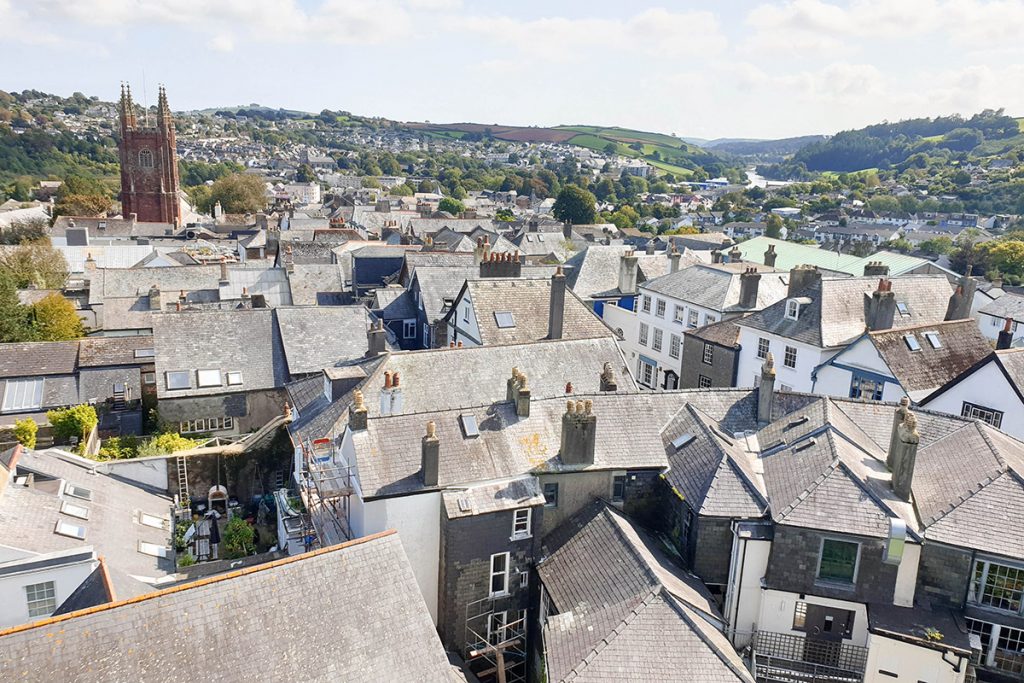
Just half an hour from Plymouth is Totnes, an incredibly historic town. Totnes is famous for its castle; it is an impressively well-restored Norman Keep, now ran by the English Heritage.
There are plenty of historic buildings around the city, with lots of interesting places to check out. Also in Totnes, you can check out Veer Island, tour around THe Guild Hall, or take a river cruise to Dartmouth.
Here are all the best things to do in Totnes.
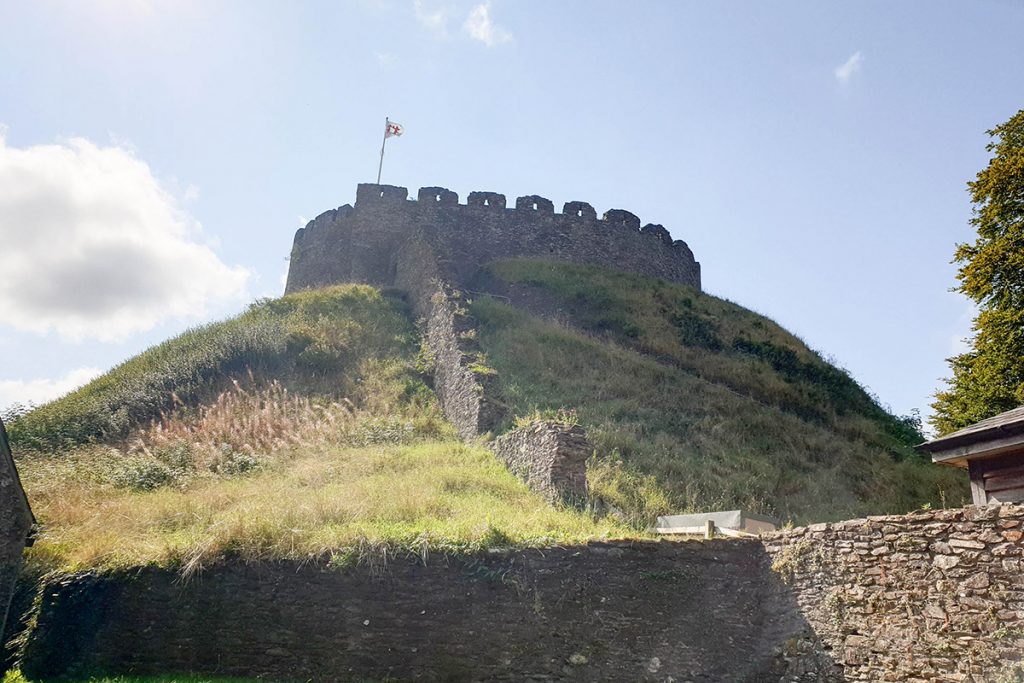
How to get there: Totnes is one of the easiest places to visit near Plymouth, as it’s on the rail line. It’s a 25 minute train ride. Alternatively, it’s half an hour drive. There is parking here, near the castle, for a relatively cheap price.
The Beautiful Town of Dartmouth
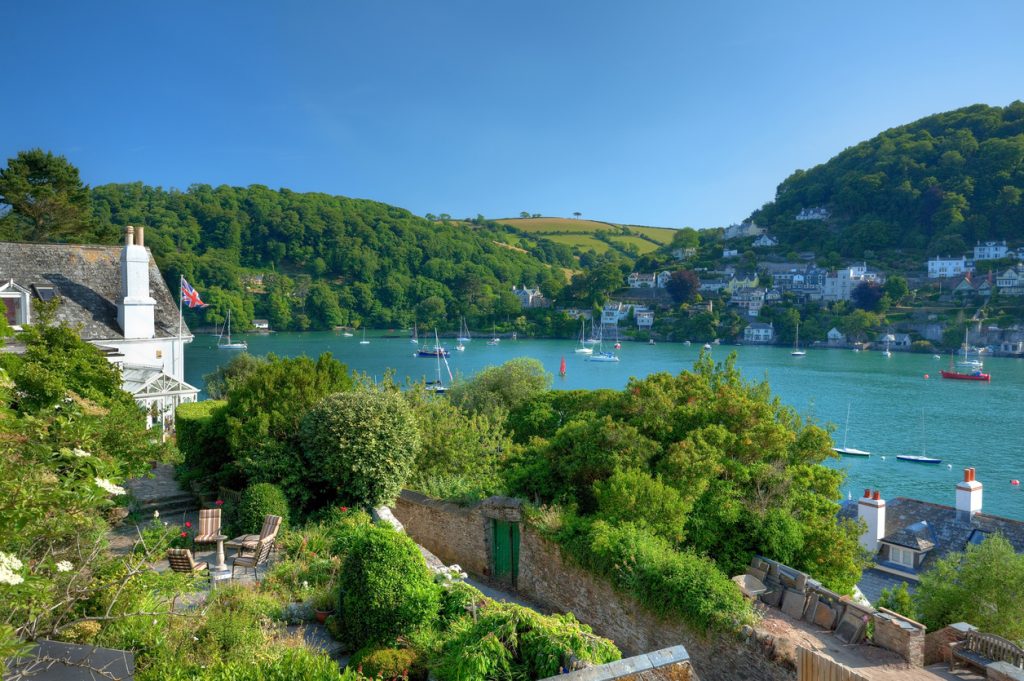
Just down the river from inland Totnes (you can do both in a day trip) is the town of Dartmouth. There has been a castle in Dartmouth the 12th century, and it has always protected the area just south of the river. It is also administered by the English Heritage – click here to read more about Dartmouth Castle.
There are plenty of other things to do in Dartmouth too. The beaches are lovely, and there are watersports opportunities aplenty! You can also enjoy lots of shops, cafes, and bars, and a generally pleasant small town feel.
How to get there: Dartmouth is one of the easiest day trips from Plymouth – you can take a bus there, and onwards to Totnes if you want to combine the two as a day trip. Dartmouth is about a 45 minute drive from Plymouth.
The Beaches of The English Riviera
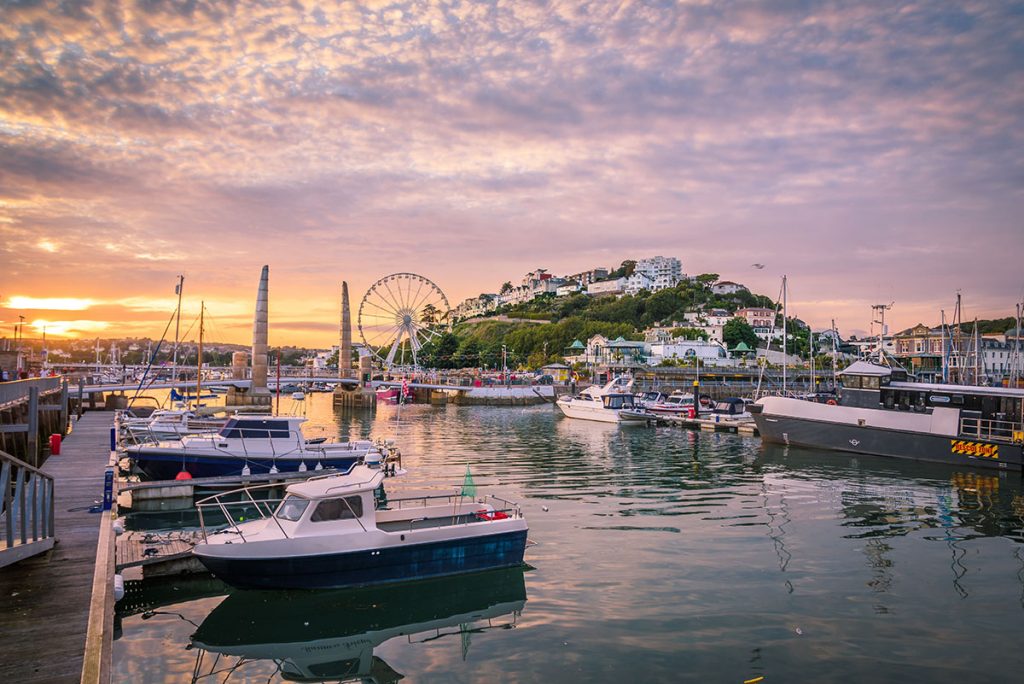
The region of Torbay sits in between Exeter and Plymouth. It composes four towns – Torquay, Brixham, Babbacombe and Paignton, an area affectionately known as ‘The English RIviera’. This region is lined with palm trees and beautiful beaches – it wouldn’t feel out of place in the Mediterranean!
There are tons of things to do in Torbay. It’s Agatha Christie’s stomping ground, so it’s a must-visit for fans of her literature (her old house, Greenway, is near Brixham). Aside from the beaches, there are caves, the 800 year old Torre Abbey, Kents Cavern, and Paignton Pier.
How to get there: although Torbay isn’t far from Plymouth, the trains are a bit of a pain. It takes an hour and a half to get from the city to Torquay or Paignton, with a necessary change at Teignmouth. Driving takes 45 minutes – 1 hour, depending on which part of Torbay you are going to.
The Enigmatic Bodmin Moor
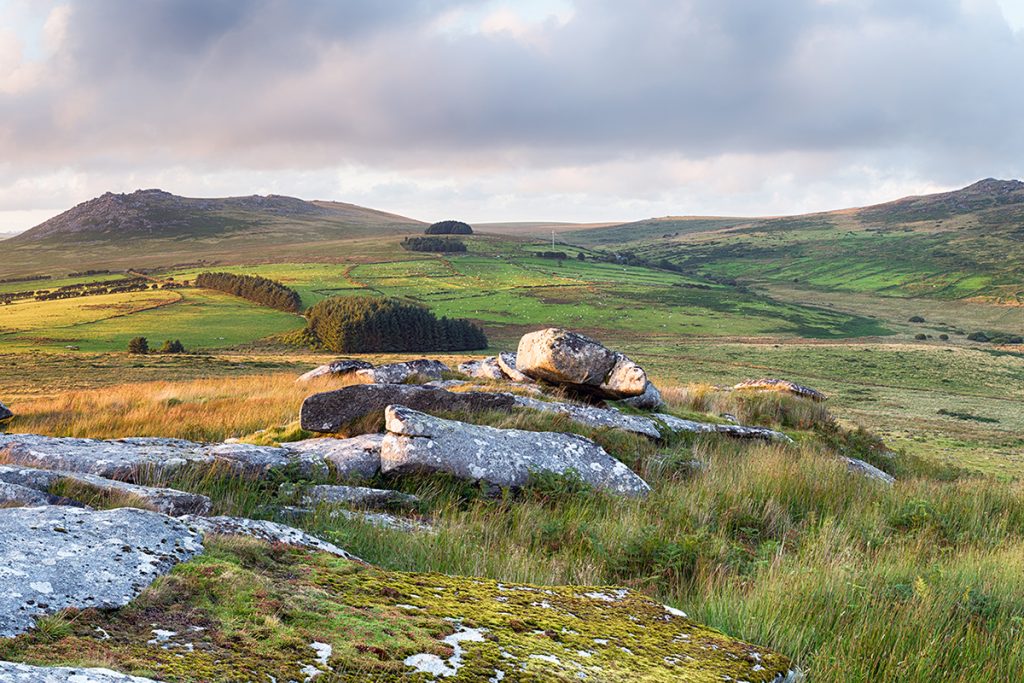
Been to Dartmoor, but want moor? You can head the other way, into Cornwall, to Bodmin. This is one of the more unusual Plymouth day trips, but it’s well worth considering. Bodmin equally has some rugged moorland and some great hikes, but there are also some other interesting attractions in the area too.
Bodmin Jail has just been revamped and reopened, and is now a fantastic attraction. You can explore alone, or you can do a guided tour of the jail. I would really recommend a guided tour if you can do it; you’ll experience all the immersive parts of the main jail but also learn a ton more about the workings of the jail, why it is so important to the British penal system, and some of the individual stories of the prisoners. You can book tours here – I did the heritage guided tour which was awesome.
Another spot that’s worth visiting is Jamaica Inn. This is a hotel, but also has a restaurant, farm shop, and two museums. The inn was where Cornish smugglers stayed when they travelled from the coastline inland. It’s got a colossal amount of history, and you can learn about this in the smuggling museum.

There’s also the Daphne Du Maurier museum. She is to Cornwall what Agatha Christie is to Devon; and she actually wrote a book called Jamaica Inn all about smuggling culture in Cornwall!
How to get there: You can take a train from Plymouth to Bodmin Parkway, which takes about half an hour. You will then need to transfer to a bus to get to the town. It is about an hour drive.
How to get there: You can take a train from Plymouth to Bodmin Parkway, which takes about half an hour. You will then need to transfer to a bus to get to the town. It is about an hour drive.
Road Tripping the North Cornish Coast
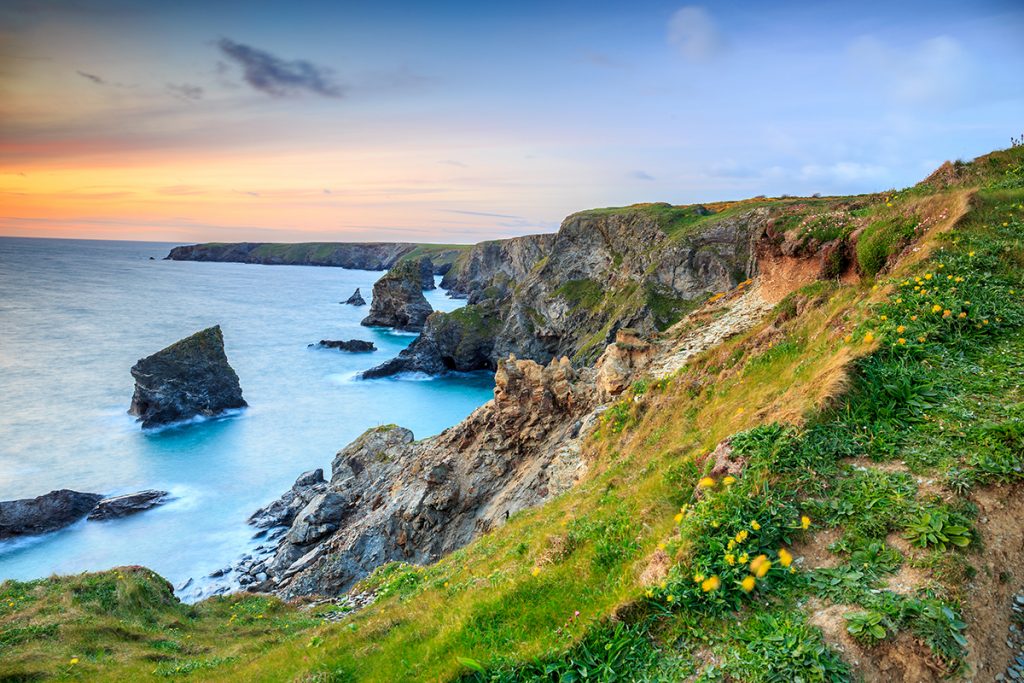
Dramatic and wild, the North Cornish coast has epic secluded beaches and plenty of history. It’s relatively easy to reach most spots in a day trip from Plymouth if you have a car. You probably won’t want to drive all the way to St Ives, which is nearly 2 hours, but could certainly do the trip to Newquay or other towns further east.
Some of the best spots to visit on the north Cornish coast (east of Newquay!) include:
- Newquay for its surf atmosphere and the famous beaches, including Fistral Beach and Towan Beach. You can also walk an epic part of the South West Coast Path here, across Newquay’s beaches and to the nearby Bedruthan Steps. See all things to do in Newquay here.
- Trevibban Mill Vineyard for Cornish wine – book ahead for tours.
- Port Isaac is a delightful fishing village with some of the most quintessential scenes imaginable – and it’s where Doc Martin was filmed! There are plenty of other things to do in Port Isaac though – including boat trips, the South West Coast Path, and plenty of cosy pubs and restaurants.
- Tintagel Castle is an English heritage property – the remains of a castle where, legend has it, King Arthur was born.
- Boscastle, a scenic National Trust owned village and natural harbour.
- Bude, a laid back town with epic beaches and great surfing. See all things to do in Bude here.
How to get there: there are some trains from Plymouth to Newquay with a change in Par, but these generally all take around 2 hours and only leave at very limited times of day. The most efficient way (by far) is to drive – it’s about 1 hour 20 minutes to both Newquay and Bude.
The City of Exeter
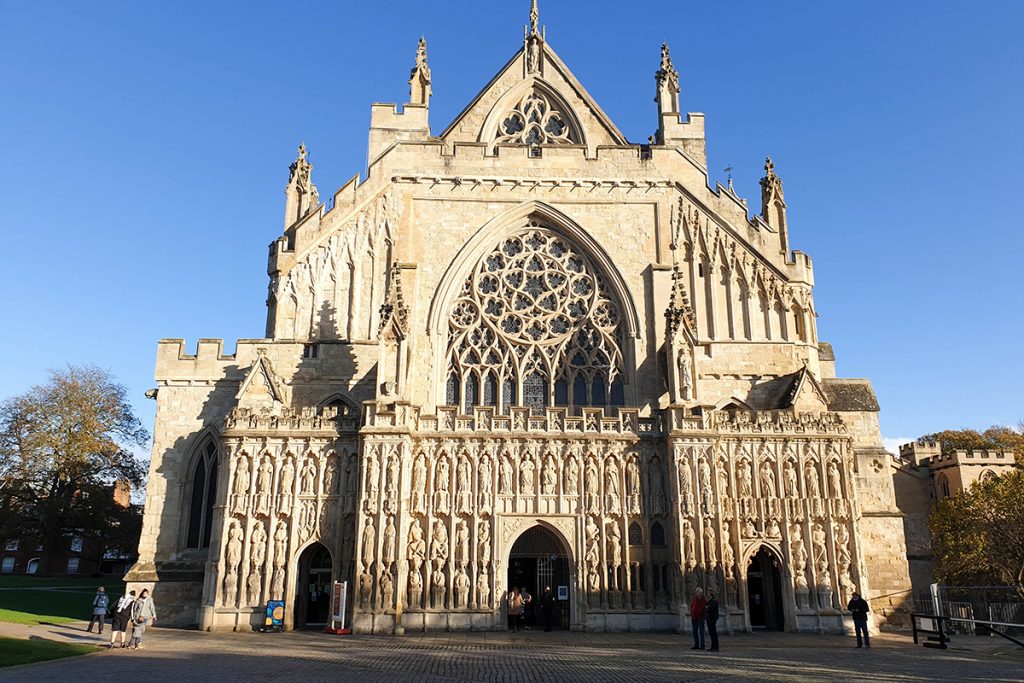
Exeter is the second-largest city in Devon and is well worth visiting along with Plymouth. You could spend all weekend here, but you can see the highlights in a day trip.
The city has an incredibly rich history, spanning back from Roman times, to Medieval times when the city prospered with the woollen cloth industry, to Georgian times when it became a cultured and prosperous place to live. I definitely recommend doing a Red Coat Tour to learn all about this complex history.
Exeter’s showpiece is its dramatic cathedral – one of the most spectacular in the country. There’s also its historic and beautiful quayside, plenty of beautiful buildings in the centre, and the chance to go underground in Exeter’s tunnels – which used to carry water under the city.
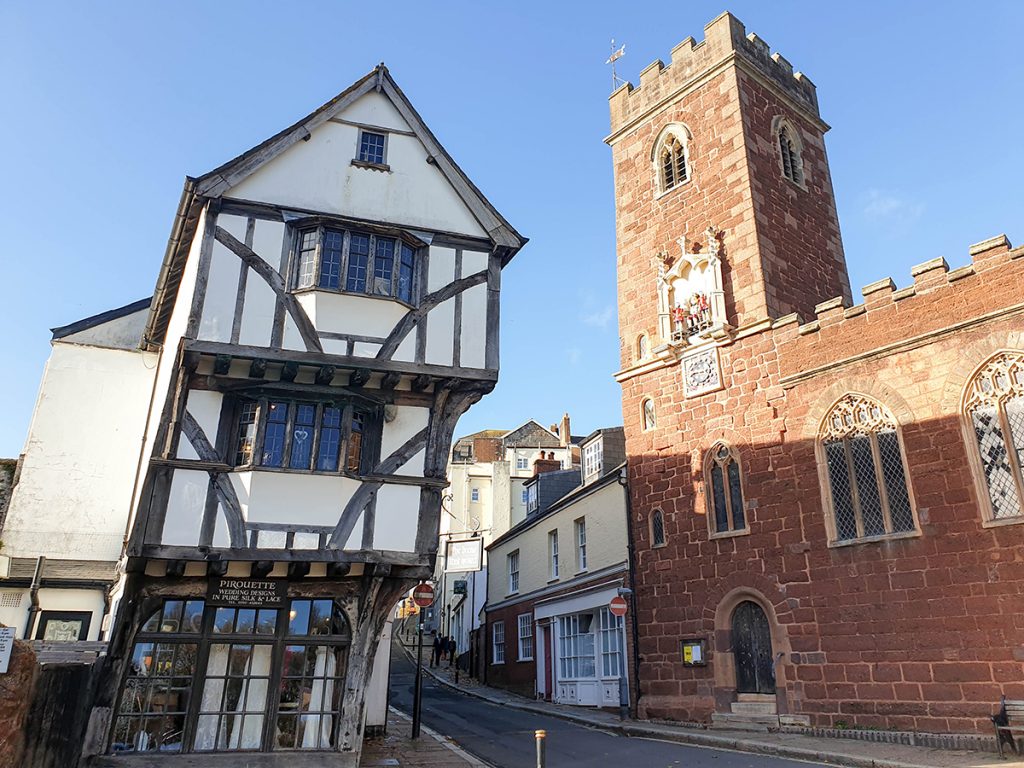
Check out this post for the best things to do in Exeter, and if you want to stay overnight, here’s where to stay in Exeter.
How to get there: It’s easy to get to Exeter by train, and takes around an hour. Driving is also about an hour’s trip – this makes visiting Exeter one of the easiest things to do near Plymouth!
The South Devon Beaches of Salcombe
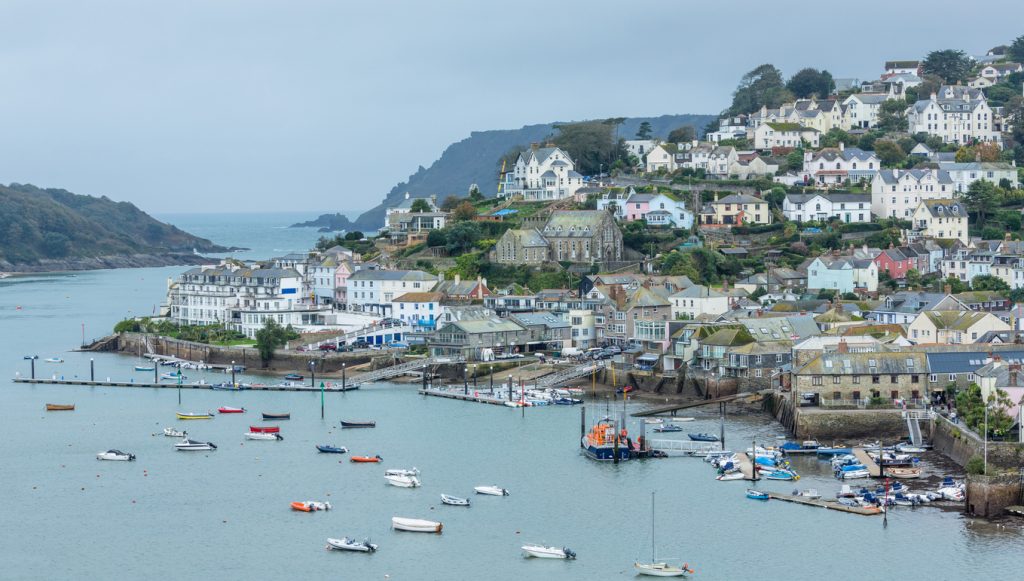
Salcombe is another picturesque Devon village, located very close to Plymouth. It sits within the South Devon AONB, and has a stunning seaside. Like Exmouth in East Devon, it sits on an estuary, which means that some of the best things to do here involve watersports! You could also get involved in part of the South West Coastal Path which goes through the town – Start Point Lighthouse is a famous landmark in the area.
Salcombe boasts a range of small businesses, including Salcombe’s own gin and ice cream. There are also plenty of local art galleries where you can get a feel of Salcombe’s special culture.
How to get there: It’s just under an hour’s drive from Plymouth to Salcombe. Alternatively, you could take a bus to Kingsbridge (the number 3) and change to the 606 to Salcombe. The bus takes around an hour and a half.
The World-Class Jurassic Coast
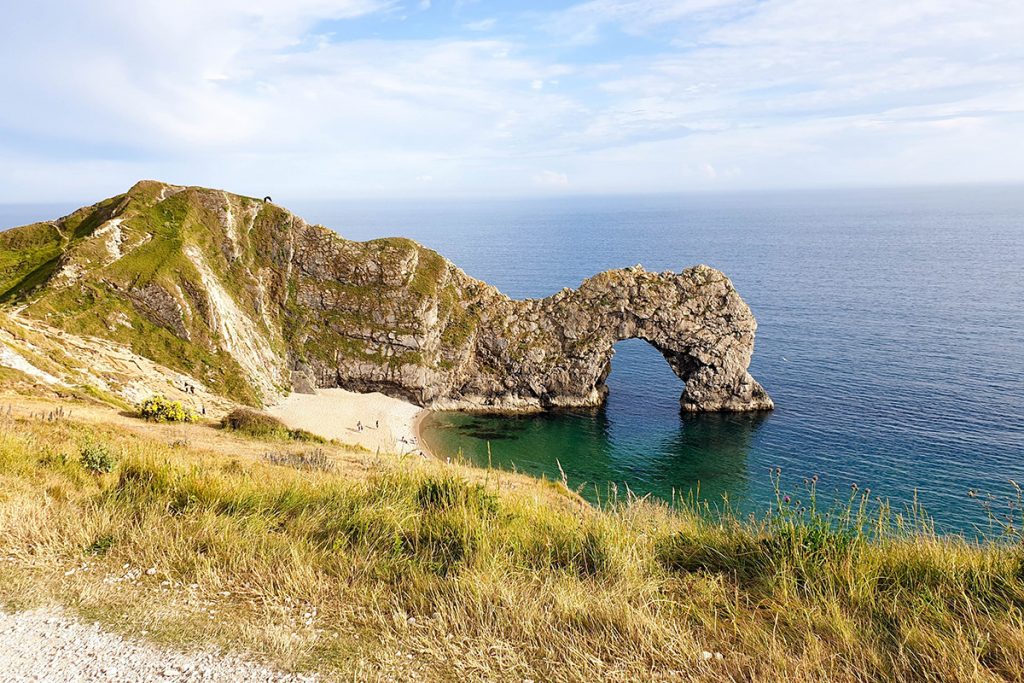
The Jurassic Coast is a bit of a drive from Plymouth, but if you’re not in this neck of the woods often, it is well worth the trip. Starting in the town of Devon and continuing for 96 miles to Studland, which is near Bournemouth in Dorset, the Jurassic Coast has some of the most epic scenery in the country.
Some of the best bits of the Jurassic Coast Road trip include:
- Exmouth, the start of the Jurassic Coast and the place with some of the oldest rocks on the coastline
- The small East Devon villages of Beer and Seaton
- Lyme Regis, a popular resort town
- The Isle of Portland, the Jurassic Coast’s most Southerly point
- The busy resort of Weymouth
- Lulworth Cove and the famous Durdle Door
- The geological features of Kimmeridge Bay
- Old Harry’s Rocks, the end of the Jurassic Coast
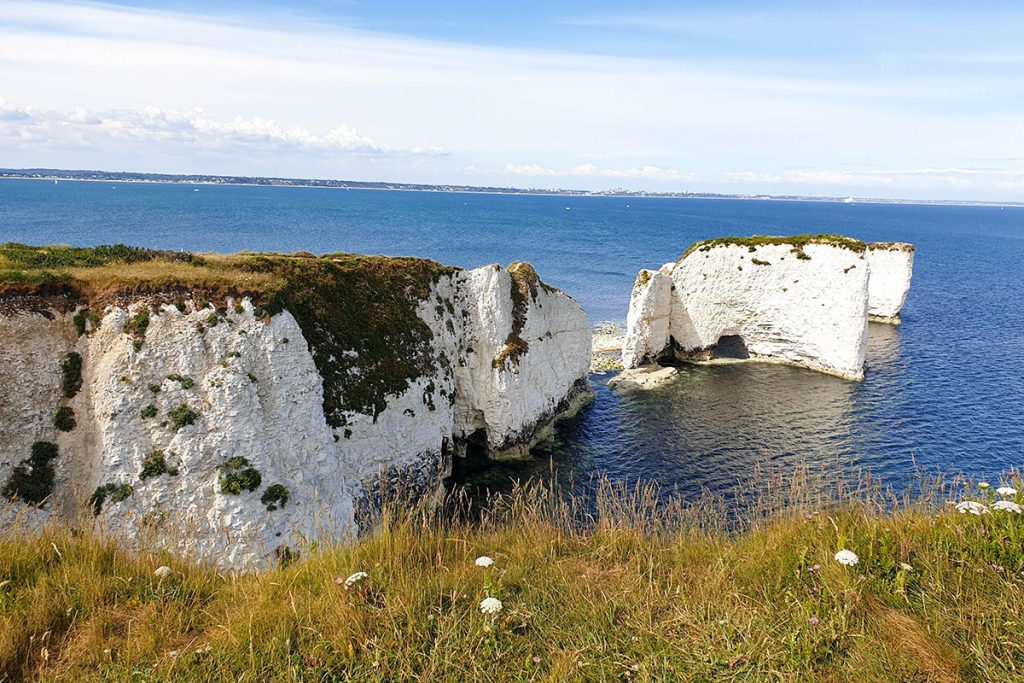
As you can see, there’s a lot to experience here – so much that you might need more than a day trip from Plymouth! You might just want to see the westernmost parts, or set off early if you’ve got your heart on seeing Old Harry’s Rocks or Durdle Door (both are beautiful).
If you want to focus just on Exmouth, you could do a hike which takes you to Budleigh Salterton, and then into the moorland and to the villages of Otterton and East Budleigh before returning to Exeter – click here to read instructions.
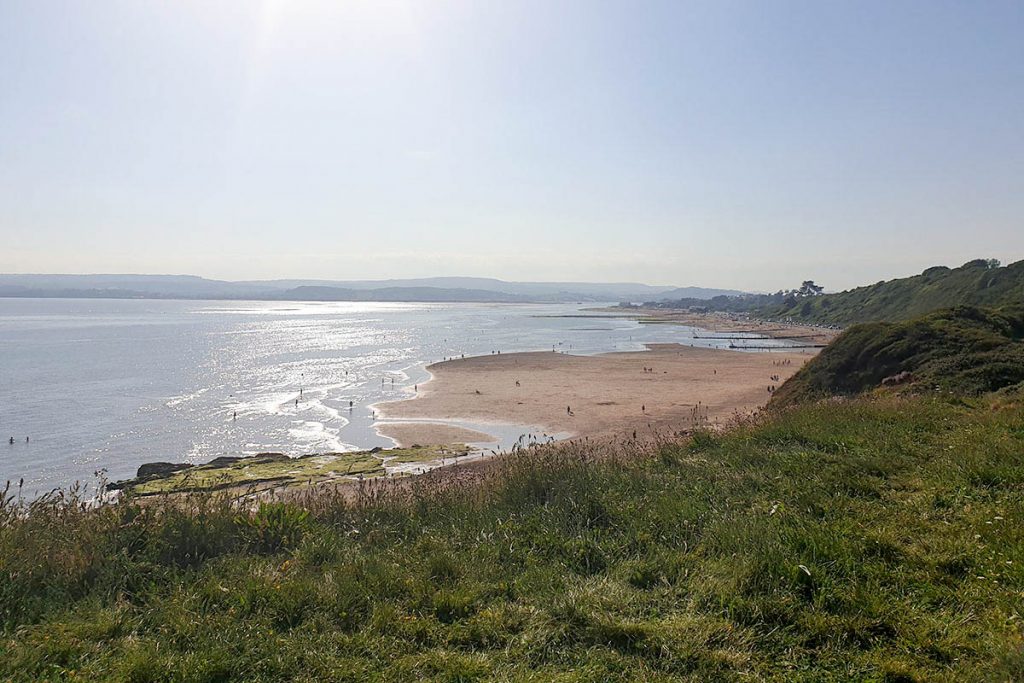
How to get there: The only really feasible way to see the Jurassic Coast with public transport is to take a train to Exeter and then one to Exmouth (the journey will take about 1 and a half hours, provided you don’t have to wait in between the trains!). From Exmouth Station you can walk to some of the best of the Jurassic Coast, so it definitely is worth it.
It’s more feasible as a Plymouth day trip if you’re driving. It’s just over an hour to Exmouth and 2 hours 45 minutes to Old Harry Rocks. The eastern part of the Jurassic Coast is epic, but you might want to save it for another trip due to the long drive time. Or, of course, if you’re driving from the east you could visit it on the way!
The Best Places to Visit Near Plymouth
This is by no means a definitive list, but I hope its provided you with some inspiration of the best things to do around Plymouth! After you’ve spent some time in the city, be sure to check out these day trips from Plymouth to see another side of Devon and Cornish culture.
Pssst… are you still planning your Plymouth trip? Check out this post for the best places to stay in Plymouth!

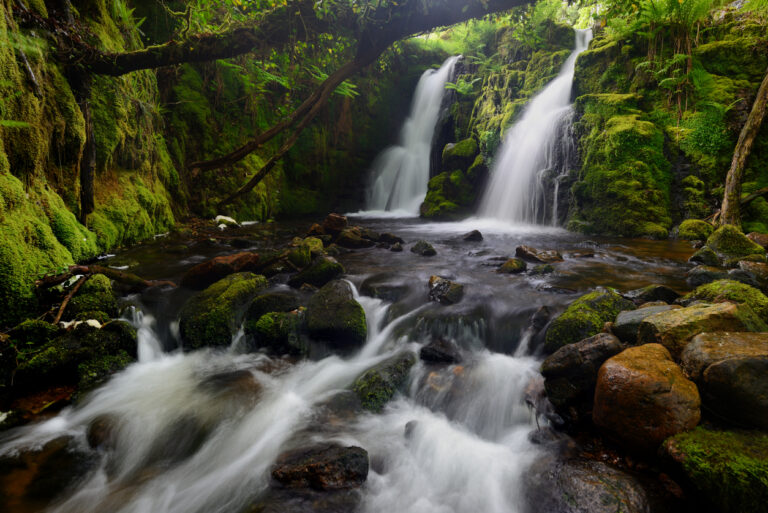
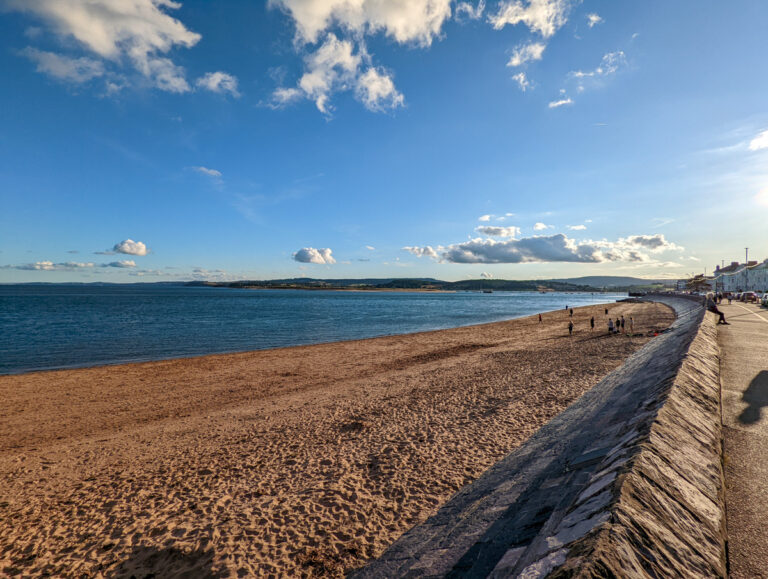
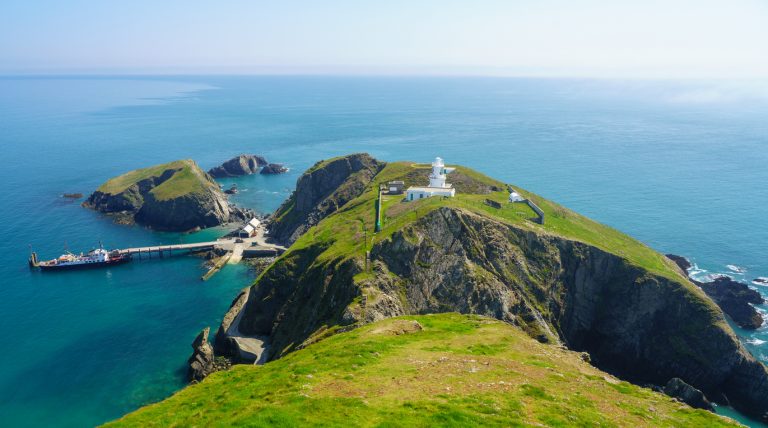
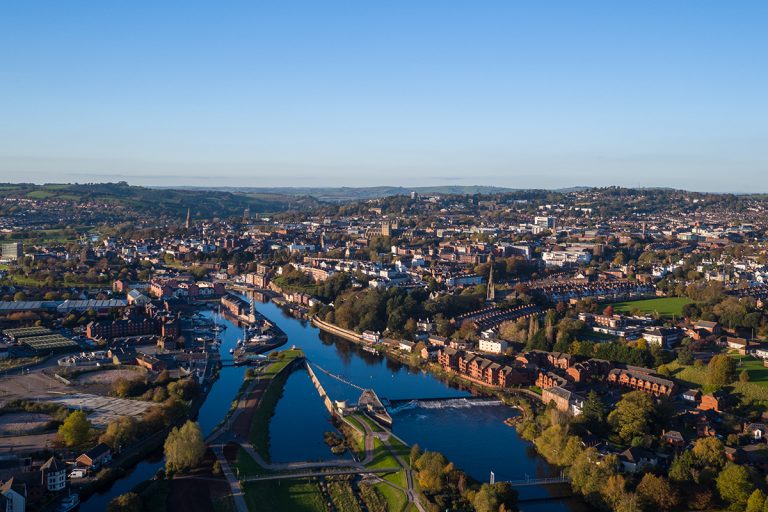
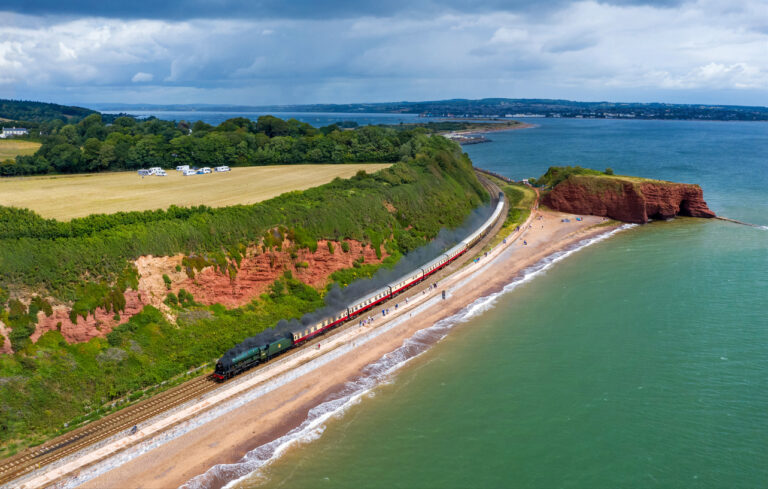
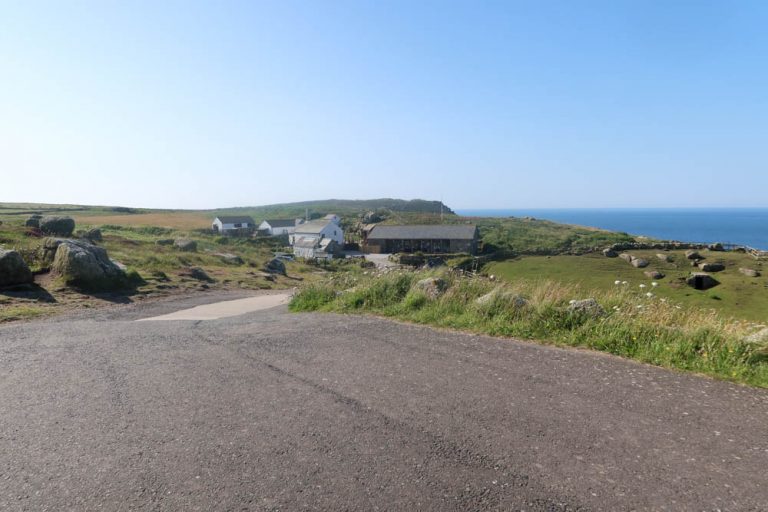
Are there any day coach trip from Plymouth to Devon or Cornwall
Hello, you can try this tour company: https://devonandcornwalltourguides.com/